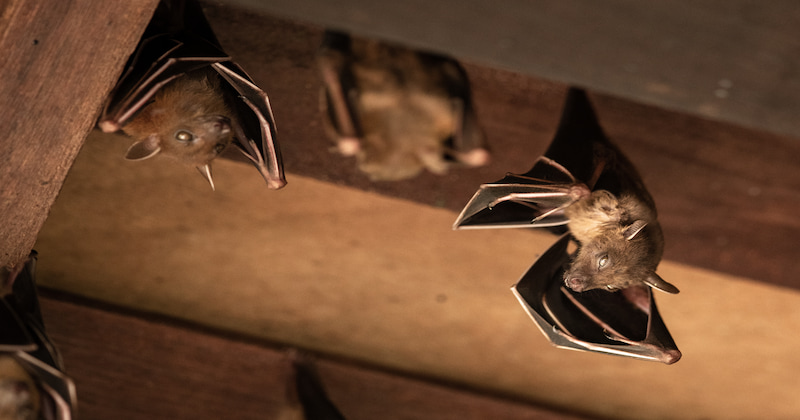There are in total eight species of bats in Ontario. From those eight The Little Brown Myotis, Least or Small-footed Bat, Eastern Pipistrelle, and the Big Brown Bat hibernate in the winter. When food runs out in the fall, these four bats will go in search of cool and humid mines and or caves. When these bats are in these areas, they enter a stage called torpor which allows them to drop their body temperature to that of the space they’re in. There are a few species in Ontario that only pass their summers over here. These bats are the Red Bat, Silver-haired Bat, and the Hoary Bat. These three bats avoid the cold temperatures by immigrating south in the winters. There seems to be a growing concern for their survival because bats hibernate in small enclosed areas.
The most vulnerable of bats are hibernating bats and their nursing colonies. Before they go in the state of hibernation, bats stock up fat reserves to pass through the harsh winters. This fat reserve is needed to last the entire winter. Humans seem to be a factor that adds to their decline as well. When these bats are in their hibernacula, people may enter and disturb them from their torpor state. These bats become agitated and may fly around to another place. Since the energy they use takes from the fat reserves, the chances of survival throughout the winter decrease.
Research has shown that when the bats get agitated from their torpor, the amount of energy that gets metabolized is equal to that of several days in torpor. This is the exact reason why bats are a protected wildlife animal in Ontario. Bats are very vulnerable as their decline is also attributed to human disturbances. Despite their negative reputation in the world as being seen as wild scary blood-sucking animals, they are indispensable in the ecosystem. In terms of containing insect epidemics, studies have shown that bats along with birds play a very crucial role in keeping insects at bay that could otherwise have devastating impacts on forests. Bats are fond of several insects such as mosquitoes.
One of the most common bat species that ‘roost’ in attics is the Small Brown Bat, also known as the Small Brown Myotis. It remains one of the best-studied bat species in Ontario. The bat typically roosts in colonies together with up to hundreds of bats. Their hibernation usually starts in September and will last torpid to spring. Warm weather might arouse them from their torpid state. During this time. Bat removal technicians should be contacted to see what is legally possible as Ontario has very strict laws on when to remove bats from their hibernacula. Bats should never be disturbed by homeowners themselves! Bats are protected wildlife animals. Any type of tampering can result in hefty fines.
To contact bat removal specialists from Bat Control and to ask questions about the removal process, call us at
